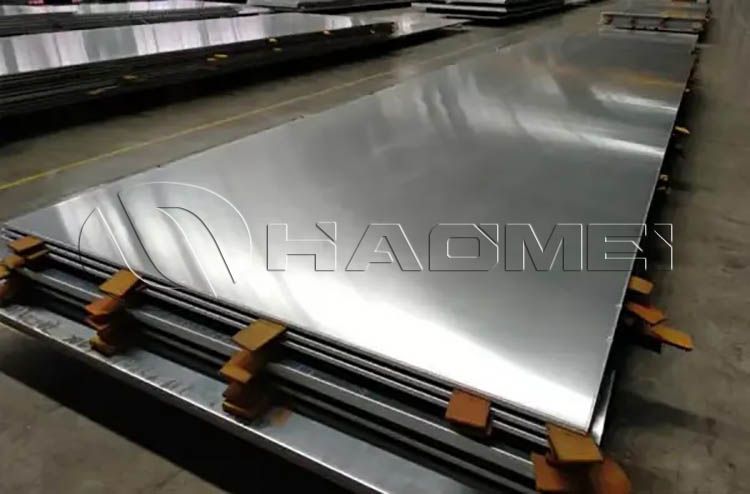
The main alloying elements of 6061 aircraft aluminum are magnesium (Mg) and silicon (Si), which form the Mg₂Si phase, giving the alloy unique properties. It is a heat-treatable alloy with medium strength, good formability, weldability and machinability, while maintaining good operating performance in the annealed state.

6061 t3 aluminum is cold-worked after solution treatment and then naturally aged to a basically stable state. Its tensile strength is significantly improved, generally reaching more than 300MPa, and its yield strength can reach about 200MPa. This strength level enables it to withstand the various stresses faced by aviation components during flight, such as the huge bending stress that aircraft wings are subjected to during flight. The 6061 alloy in the T3 state can effectively cope with it, ensuring the stability of the wing structure and ensuring flight safety.
Processing performance
In terms of processing performance, the 6061 alloy in the T3 state performs well. Due to the optimization of the internal structure of the material after cold processing, good surface quality can be obtained during mechanical processing such as turning, milling, drilling and other operations, and tool wear is relatively small. This is extremely important for the precision manufacturing of aviation parts, because aviation parts have extremely high requirements for dimensional accuracy and surface roughness. The 6061-t3 alloy can meet these strict requirements and help improve production efficiency and product quality.
Corrosion resistance
Aviation parts are exposed to complex and changing environments for a long time, so corrosion resistance is crucial. The 6061 t3 aluminium has a certain degree of corrosion resistance, and a dense oxide film can be formed on its surface to prevent erosion by external corrosive media. In general atmospheric environments and environments with a certain amount of humidity and salt, it can maintain good performance for a long time, and will not cause strength loss or structural damage due to corrosion, thereby ensuring the service life of aircraft parts.
6061 t351 is obtained by stretching and stress relief treatment on the basis of T3. This treatment effectively eliminates the residual stress inside the alloy and further optimizes the strength performance. Its tensile strength is similar to or slightly improved than that of the T3 state, while its yield strength is more stable and can better resist plastic deformation. In aviation structural parts, such as fuselage frames and other parts that are subjected to complex stresses, the 6061 alloy in the T351 state can ensure the safety and reliability of the structure during long-term use with its stable strength and good deformation resistance.
Dimensional stability
For aviation components, dimensional stability directly affects the assembly accuracy between components and the performance of the entire aircraft system. Since the residual stress is eliminated, the 6061 alloy in the T351 state has minimal dimensional changes during subsequent processing and use. This is particularly critical for the manufacture of high-precision aviation parts, such as engine blades and avionics equipment housings. It can ensure the matching accuracy between components, reduce assembly problems caused by dimensional deviations, and improve the overall performance of the aircraft.
Fatigue performance
During the flight of an aircraft, the components will be subjected to repeated alternating loads, so the fatigue performance of the material is crucial. After special treatment, the fatigue life of the 6061-t351 is significantly improved. When subjected to cyclic stress, it can withstand more cycles without fatigue fracture. For example, during the frequent take-off and landing process, the aircraft landing gear is subjected to huge impact and alternating stress. The 6061-t351 can effectively improve the fatigue performance of the landing gear, extend its service life, reduce maintenance costs, and ensure the safety of aircraft take-off and landing.
In the aviation field, 6061-t3 is often used to manufacture some parts that have high requirements for strength and processing performance, and relatively less stringent requirements for dimensional stability, such as some internal structural parts and small brackets of aircraft. These parts require a lot of mechanical processing during the manufacturing process. The good processing performance of T3 state can meet production needs, and its strength can also ensure the reliability of the parts during use.
And 6061 alloy in T351 state is more used in key parts with extremely high requirements for dimensional stability and fatigue performance, such as aircraft beams and wing main beams. As the main load-bearing structure of the aircraft, these parts not only have to bear huge static loads, but also have to withstand the test of alternating stress during flight. The 6061-t351 can ensure the safe and reliable operation of these key parts throughout the service life of the aircraft with its excellent dimensional stability and fatigue performance.
Original Source:https://www.aircraftaluminium.com/a/6061-t3-vs-6061-t351.html
Tags: 6061 Aircraft Aluminum ,
Contact Us